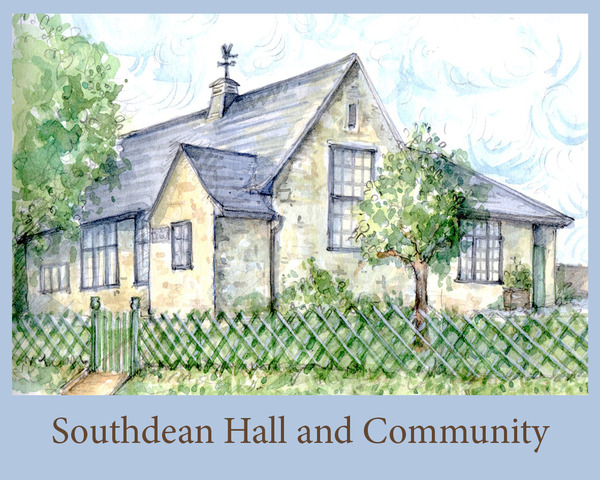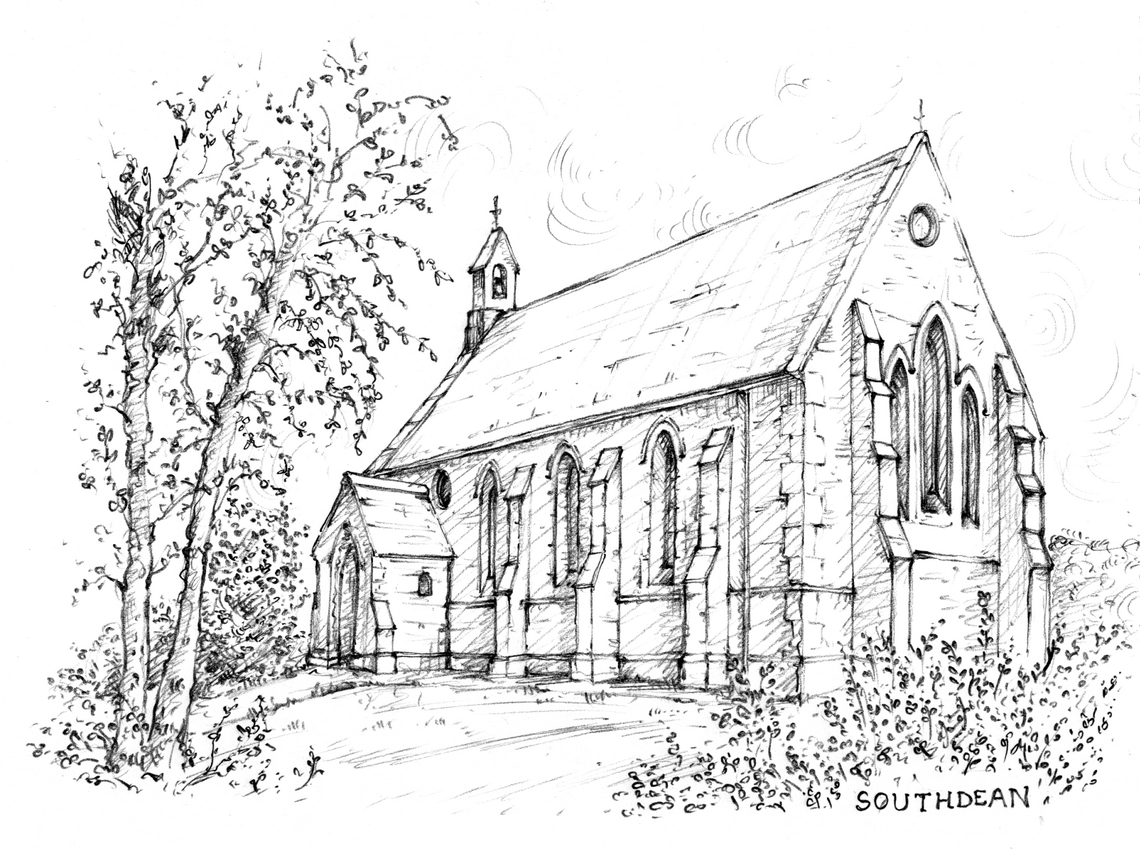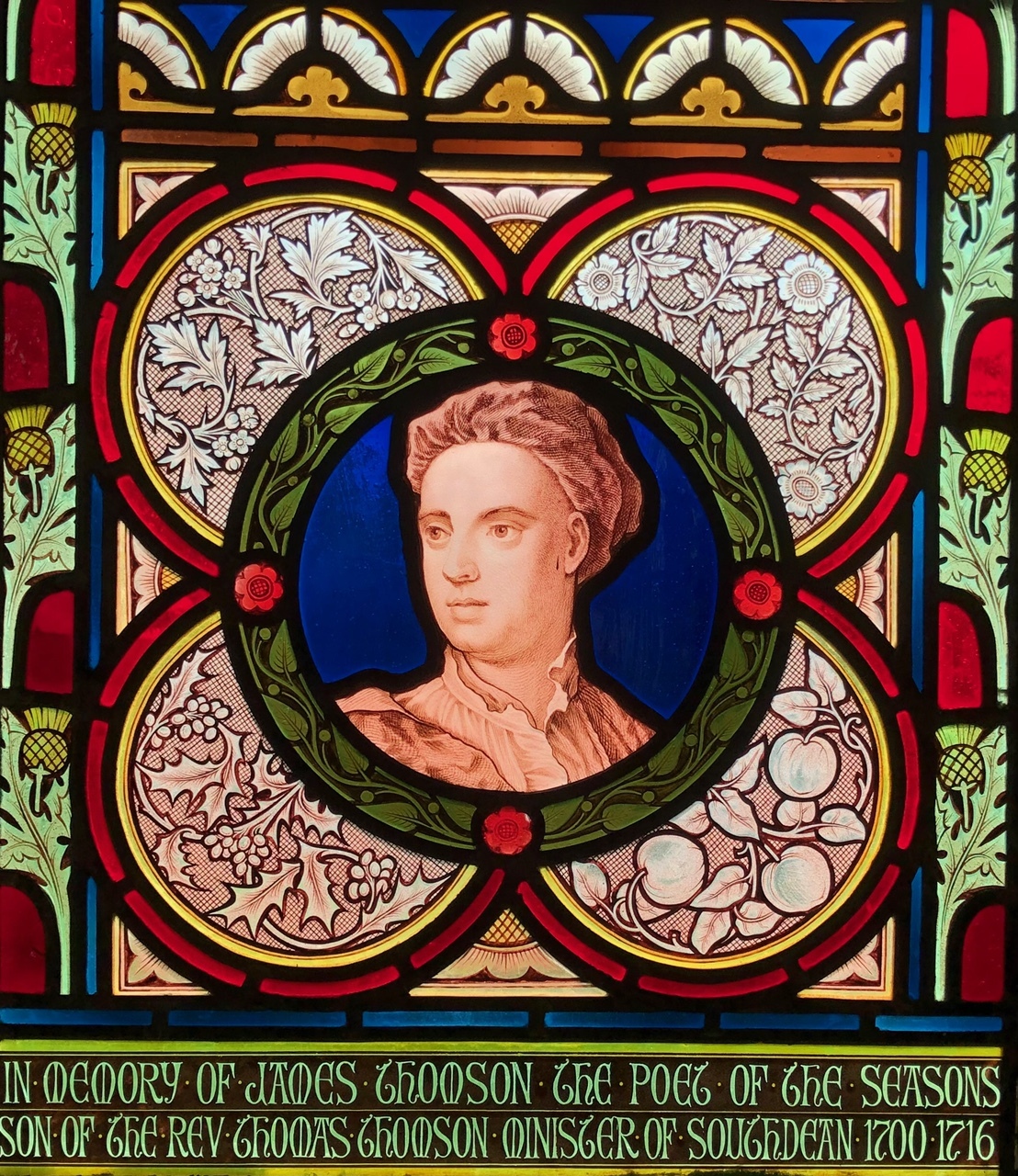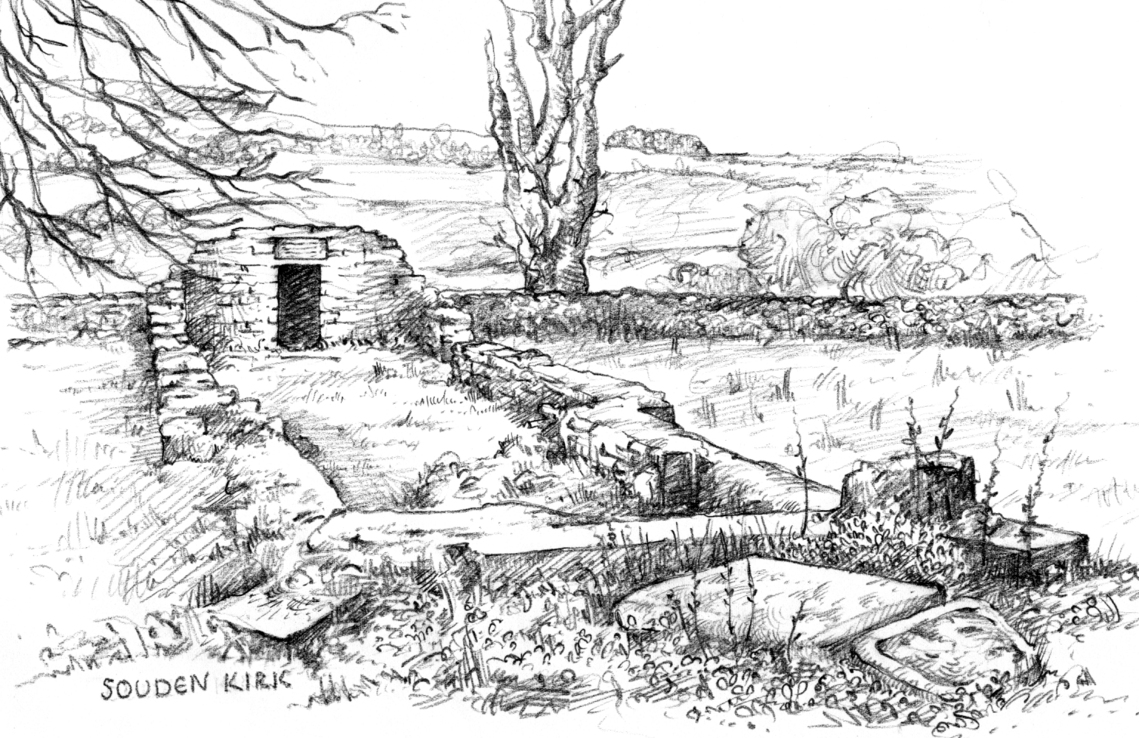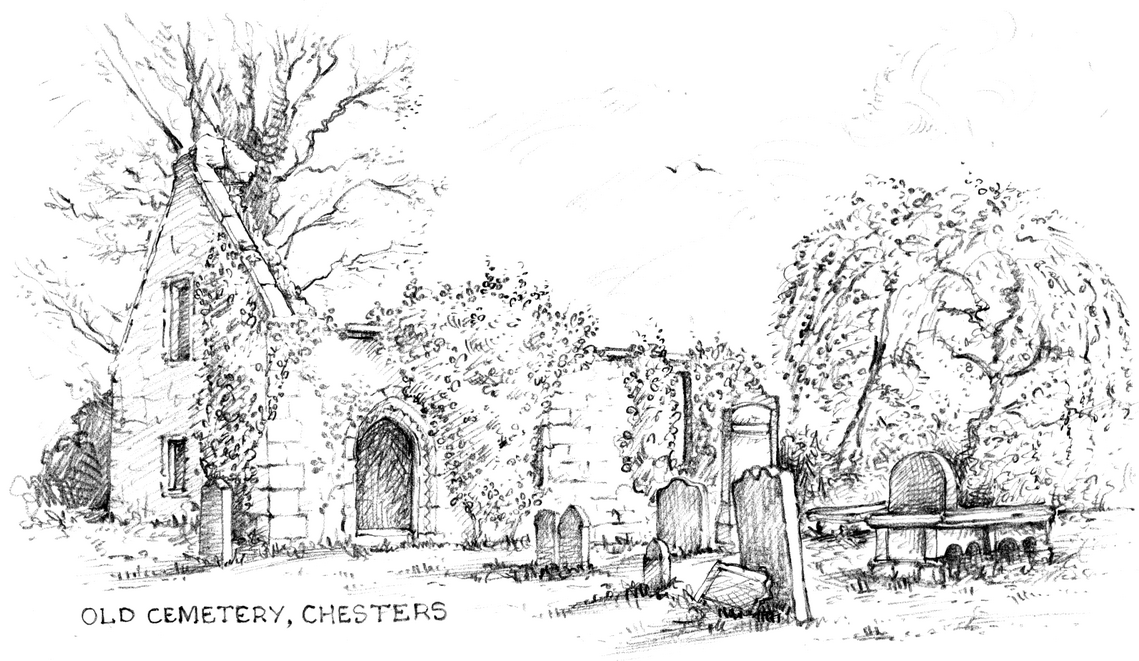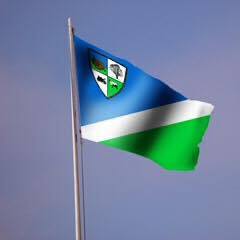Southdean Parish
"A parish in Roxburghshire, about 12 miles long, and 7 broad, lying on the banks of the Jed, and comprehending a part of the old parish of Abbotrule ... Like the rest of the border districts, this parish affords many monuments of warlike antiquity, as camps, castles, and other fortifications. Population in 1801, 697." From the Gazetteer of Scotland, published 1806, Edinburgh.
Southdean Church
The current Southdean Church is a beautiful little church dating from 1874. It stands on the minor road to Ruetownhead and Jedburgh, along from ‘The Steadings,’ ‘Roundabouts Farm’, and a small group of houses.
It has stained-glass windows, one of which is dedicated to the memory of James Thomson (1700-1748) Thomson was born in Ednam and educated in Jedburgh, but he spent his childhood in Southdean where his father was parish minister. He moved to London in 1725 and shortly thereafter began writing his remarkable poetic cycle, ‘The Seasons.’ He is probably best known for writing the patriotic song, ‘Rule Britannia.’
Southdean church has received a number of legacies and donations, reflecting its special place in the emotions of the people for over 130 years. The graveyard is still in use but is located in Chesters Brae, up from the 1690 church. The church can be used for special services of any kind, the most popular being the carol service held on alternate years with Hobkirk Church on Christmas Eve, which is usually followed by a social event at the nearby village hall.
The building is of red sandstone and was cleaned by sand blasting in preparation for two wedding services in the early 21st century. The number of stained-glass windows is unusual for a Church of Scotland building and the interior has no middle aisle – side aisles only.
Souden Kirk
The original Southdean Kirk is located near Southdean Farm and the Jed Water, and is the focus of the ‘Southdean Rideout’ during the annual Jedburgh Callant’s Festival. The Callant and his henchmen gather there to commemorate the Battle of Otterburn in 1388. The Scottish Army under Earl Douglas met there to plan the incursion and subsequent battle on English soil.
An inscribed stone panel is on the east wall of the tower. The inscription reads:
‘Souden Kirk. Here in the year 1388, James, Earl of Douglas and the other Scottish leaders assembled their forces, matured their plans, and began the invasion of England which culminated in the Battle of Otterburne.’ ‘When the dead Douglas won the field.’ ‘These walls repaired and this stone inserted – 1910.’
Much of the ruins currently visible, are dated to the 13th century but evidence of an earlier church building was uncovered when the site was excavated by Hawick Archaeological Society in 1910. This is thought to be 12th century. There is a record to show that ‘Galfrid’ was the priest in 1260. In 1688, the roof collapsed just after the congregation left the church. A new church was built at Chesters in 1690.
A slab considered to be an altar seal, is now kept under glass within the modern church. Some bones were uncovered during excavation. There was originally a tower on the west side, together with a nave and chancel. There was no aisle. The tower and nave are thought to be 13th century and the chancel 15th century. The font is still visible, and a super-altar has also been unearthed. The ruins are named as ‘Souden Kirk’ – ‘Souden’ being the local pronunciation of Southdean.
Old Cemetery
After the collapse of the roof of the original Souden Kirk (above) located near the Jed Water, a new church was built in Chesters itself in 1690. This is in Chesters Brae, set back a little from the road and near to the former school and schoolhouse. It is accessible by an unpaved road which also goes up to the school buildings. Another track can be used to access the current Southdean Cemetery, still in use. The west gable wall and part of the south wall are all that remains today of the original building that was superseded in 1874 by the third and present Southdean Church. 1874 was the year of a great deal of school and church building in Scotland. There are some interesting 18th and 19th century gravestones in the churchyard, which continues to be maintained by the local authority. In recent years, some trees have been felled or cut back in the graveyard for safety reasons.
The Southdean Flag
The flag of the Southdean Community was created in 2004. It was designed by Stephen and Andrew Smith. After a competition held in Southdean Hall, it was declared the winner. The design was then sent to a professional flag maker, ‘Flying Colours’, and the flag was created. It is a full-size flag as used on public buildings.
The design is a diagonal tricolour with a shield emblem in the blue section. The colours are, from top left; blue, white, and green. The shield is fimbriated in black and divided into four sections, containing a sheep, a motorbike, Southdean Church and the old beech tree under which village meetings were once held.
The blue stands for the blue sky, the white for the sheep in this rural community, and the green for the fields, woods, and forests. White can also signify the snow in winter.
Initially the flag was flown in Stephen’s garden but in 2022, a flag pole consisting of aluminium sections, was installed at Southdean Hall. The flag was subsequently flown from this pole. This type of pole is useful because it can be removed from its socket if the flag is blown from the pole by the wind and neds to be re-installed. In severe gales, the whole pole can be torn down so removing it from its socket is prudent on such occasions.
